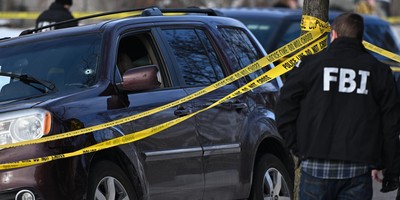One December day in 1984, a man named Bernard Goetz boarded a subway train in Manhattan. Shortly after, he was approached by four young men, all black, who requested money in a manner he took as threatening. Goetz, who had been mugged before, pulled out a pistol and opened fire, wounding all four.
Among many New Yorkers and other Americans, Goetz was instantly regarded not as a villain but a hero. At his 1987 trial, he was acquitted of attempted murder and assault and convicted on just one count -- illegal weapons possession. The jury, it seems, thought that he had a reasonable fear for his safety.
But then, who didn't? In the 1980s, the city was widely perceived as a pit of chaos and fear, an urban society stumbling toward anarchy. Between 1965 and 1984, the number of violent crimes nearly tripled. In 1984, there were nearly five murders a day. In the following years, things got worse still.
Since then, though, something completely unexpected happened with New York City crime: Most of it vanished.
In his new book, "The City That Became Safe" (Oxford), Franklin Zimring unrolls a litany of statistics that almost defy belief. The murder rate has dropped by 82 percent. Rapes are down 77 percent, and assaults by two-thirds. Auto theft verges on extinction, after dropping 94 percent.
It's a turnaround so huge that had anyone predicted it at the outset, the prediction would have been grounds for psychiatric commitment. No one would have imagined that even if the city had adopted the best possible crime fighting methods, they would have made such a difference.
To some extent, New York is merely a reflection of the country as a whole. Crime subsided almost everywhere in the 1990s, including the five boroughs. But around 2000, the national crime rate flattened out -- while in New York, it kept plunging.
Recommended
In recent years, crime declined nearly twice as much there as in Los Angeles, which ranked second in improvement among big cities. Its homicide rate, once worse than Chicago's, is now about two-thirds lower.
One possible explanation is that this progress occurred because in the 1990s, we started putting a lot more people in prison, which prevented them from attacking honest citizens. But that doesn't apply in this case.
While authorities elsewhere were building new prisons and filling them up, New York was not. After 1990, notes Zimring, the national incarceration rate rose by 65 percent. In Gotham, it shrank by more than a quarter.
If locking up criminals is essential to combating crime, the city should be awash in violence. Instead, the tide went out -- and kept receding.
Maybe we can give the credit to Rudy Giuliani, who came into office in 1994 promising a get-tough approach. But the decline began years before he arrived, and it continued long after he was gone.
He is often credited with adopting the "broken windows" approach: going after relatively minor offenses such as panhandling, graffiti and prostitution that create an atmosphere of disorder. When police tolerate petty crime, the theory goes, they invite serious crime.
But Zimring finds that this story is, at the very least, greatly exaggerated. Prostitution arrests never rose, and eventually they declined. Arrests for public gambling, another visible "quality of life" offense, also fell after 1997. "The reason that a devotion to across-the-board strict enforcement of public order offenses didn't contribute to the crime decline is that it never happened," he says.
So what accounts for the miracle? Zimring, a criminologist at the University of California, Berkeley, surmises that the biggest factors were focusing cops on high-crime areas and closing down outdoor drug markets, which helped curb gang conflicts that often turned deadly (though it had little effect on drug use). But much of what happened is a mystery.
That's the bad news, since the New York experience yields no easy formula for safe streets. But it proves we can realize vast improvements in safety without first solving all the problems that supposedly cause crime -- poverty, bad schools, out-of-wedlock births, drug use, violent movies and so on.
The crucial discovery, concludes Zimring, is "that life-threatening crime is not an incurable urban disease in the United States." We may not yet be able to say how, exactly, to drastically reduce the dangers that plague our cities. But we know it can be done.

























Join the conversation as a VIP Member